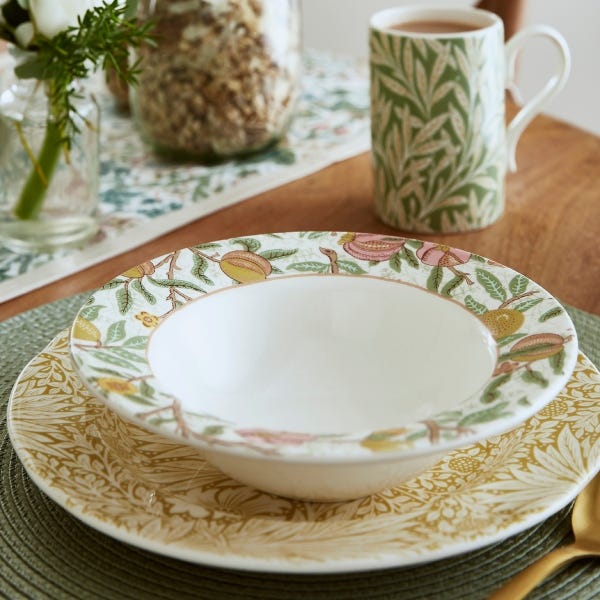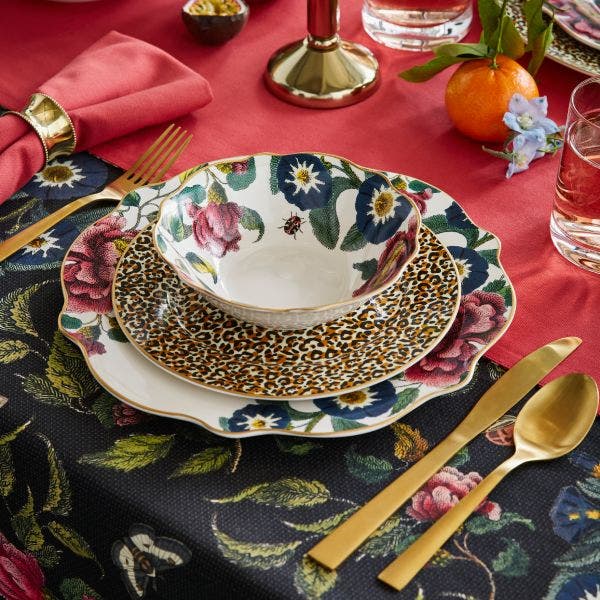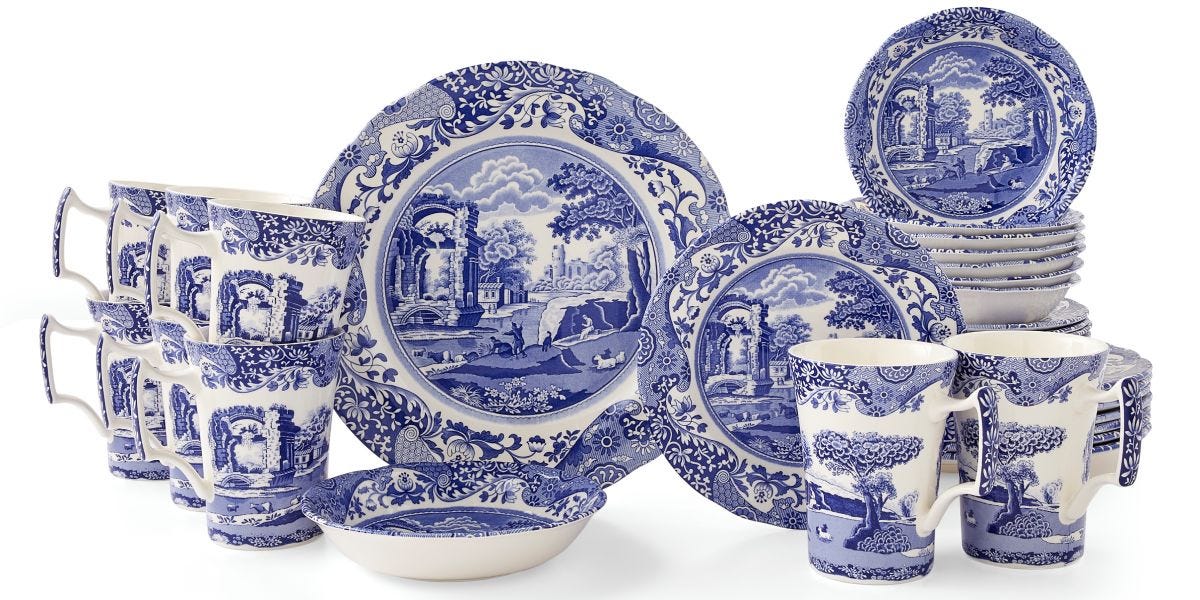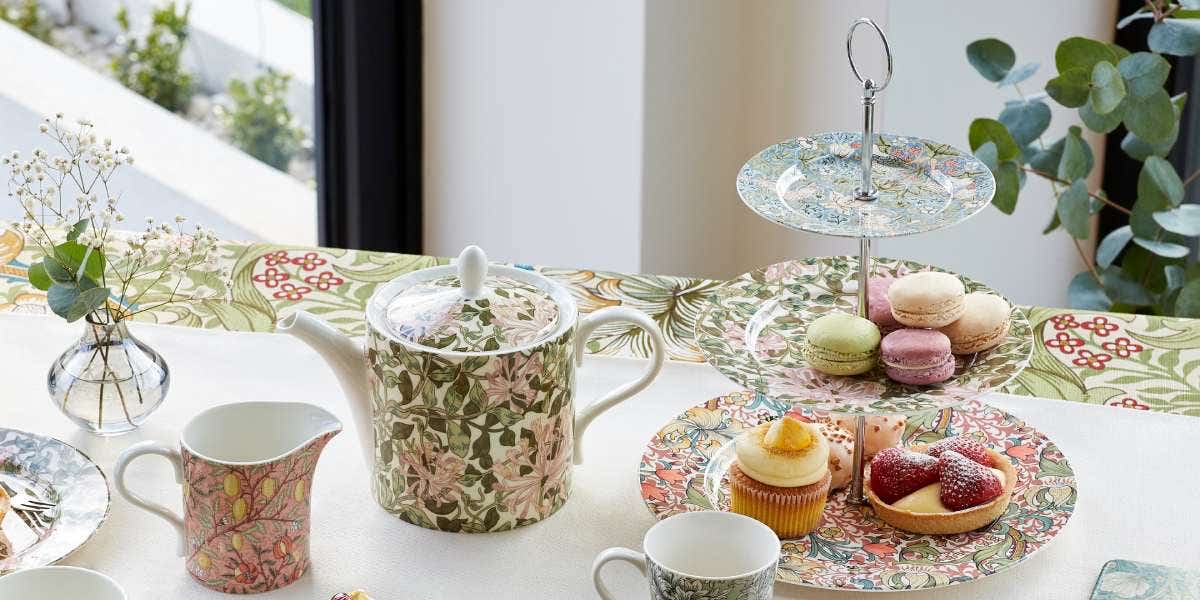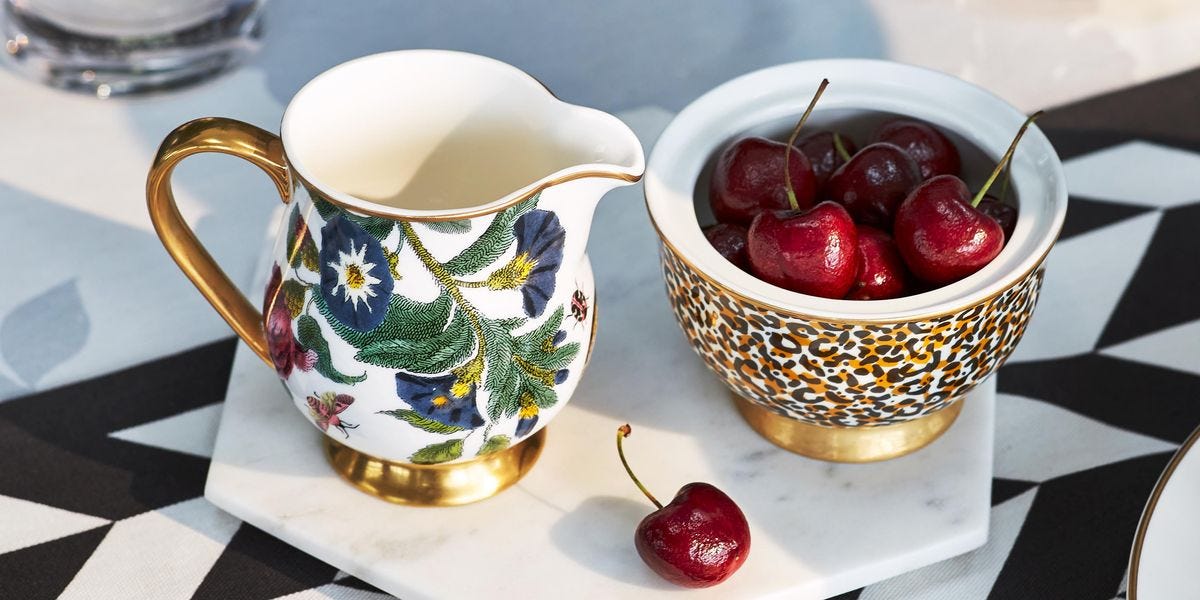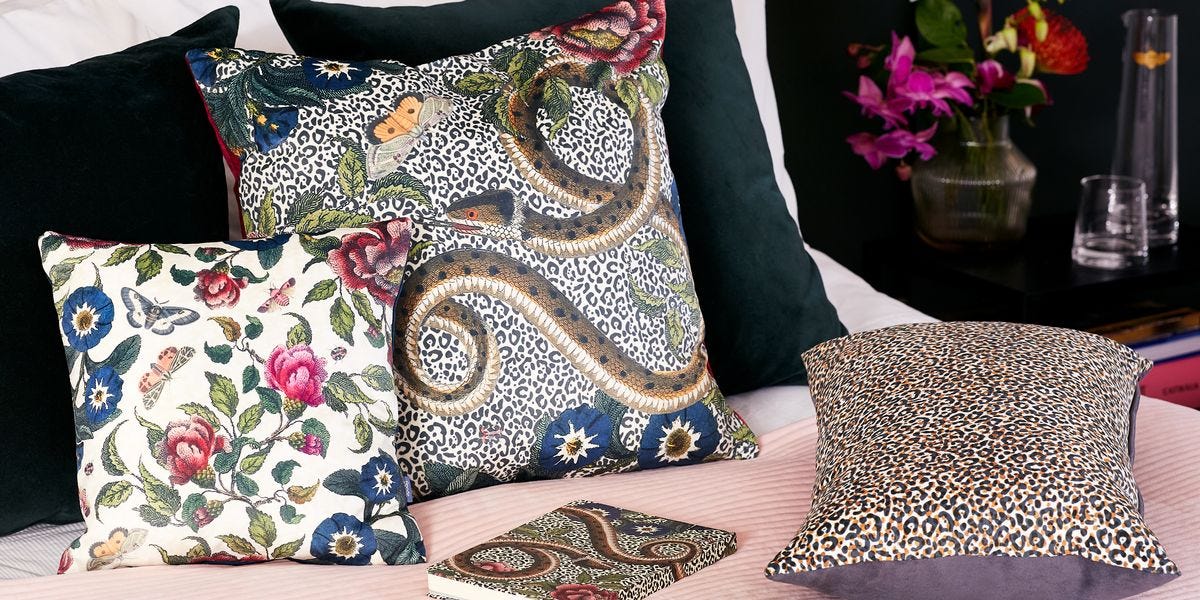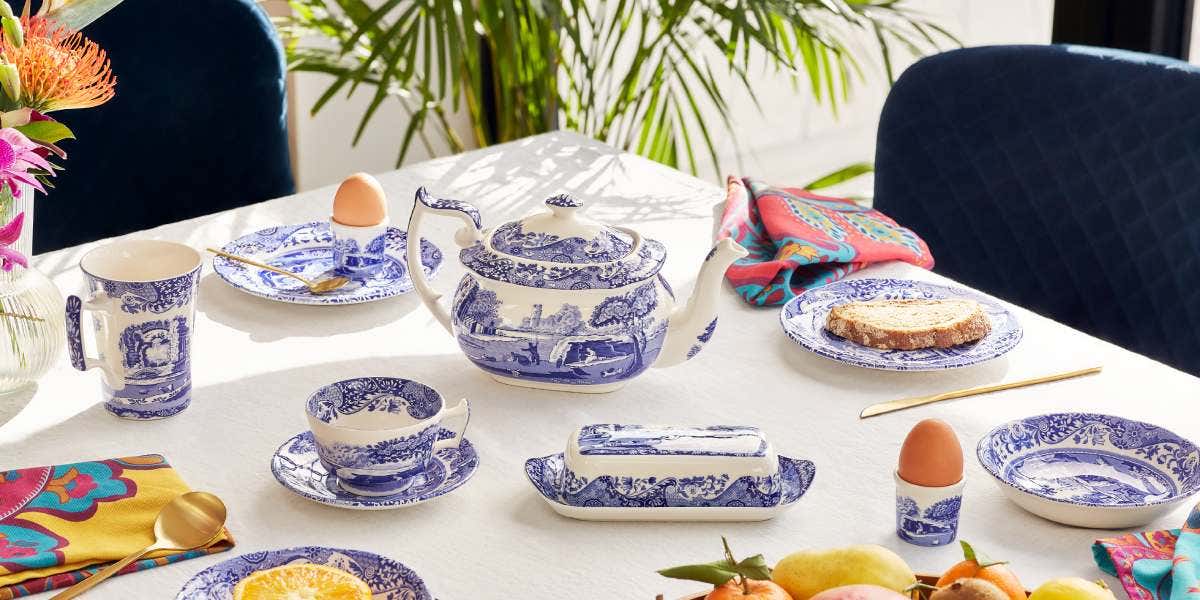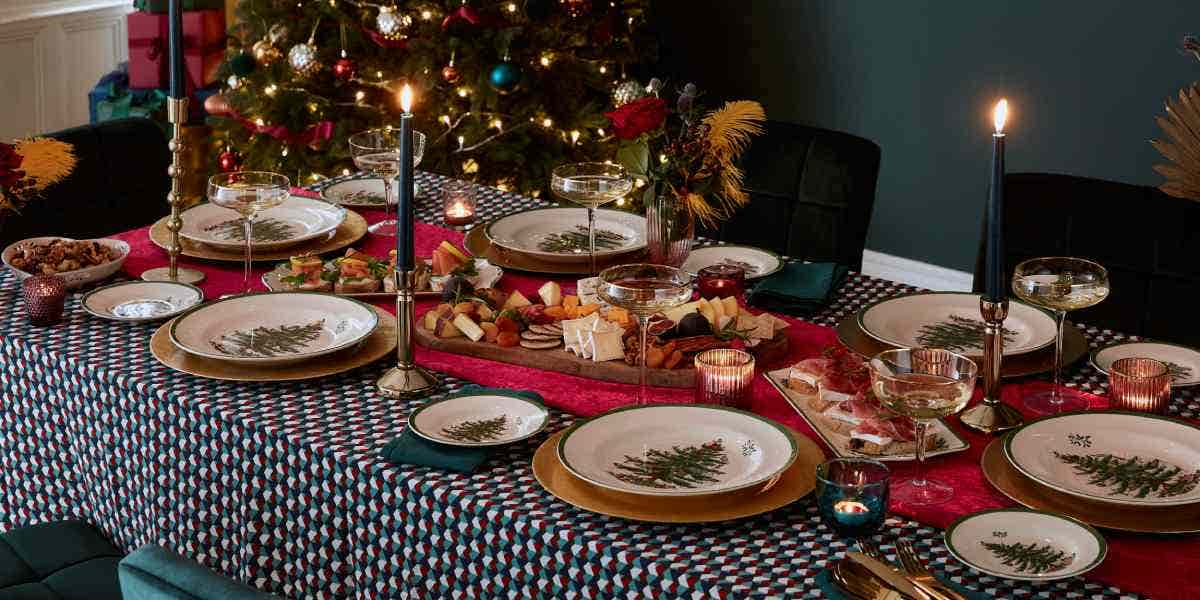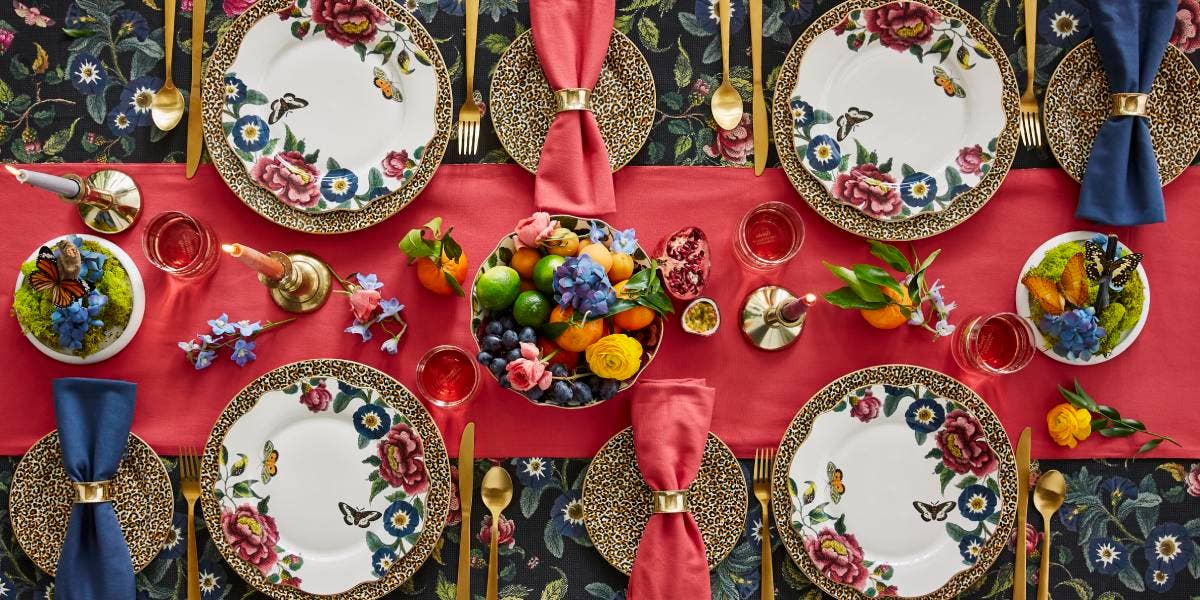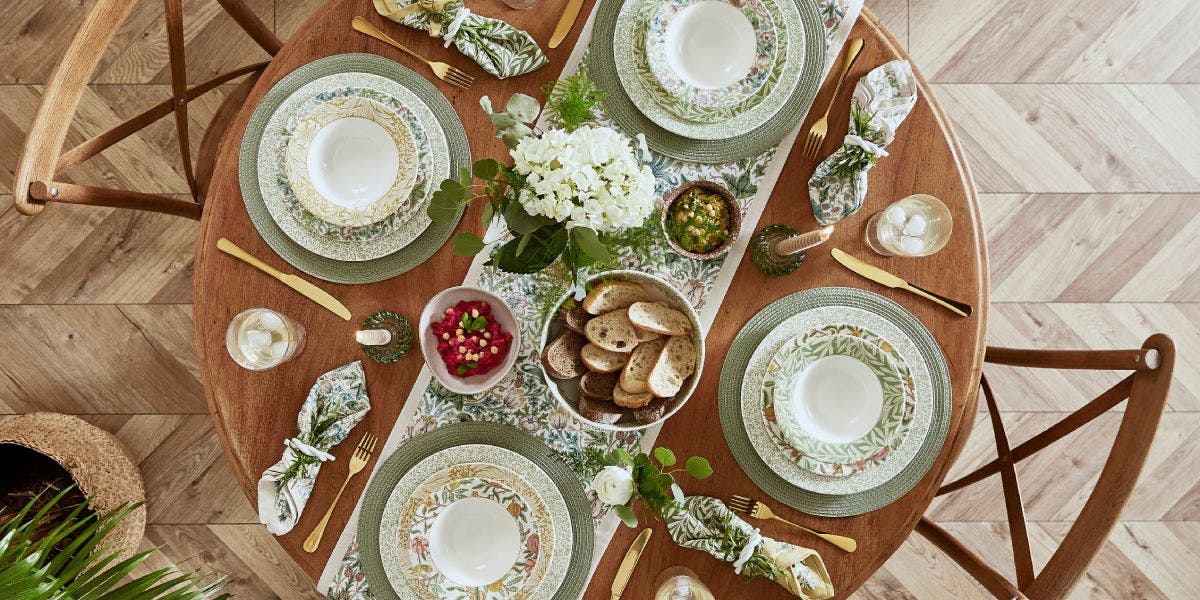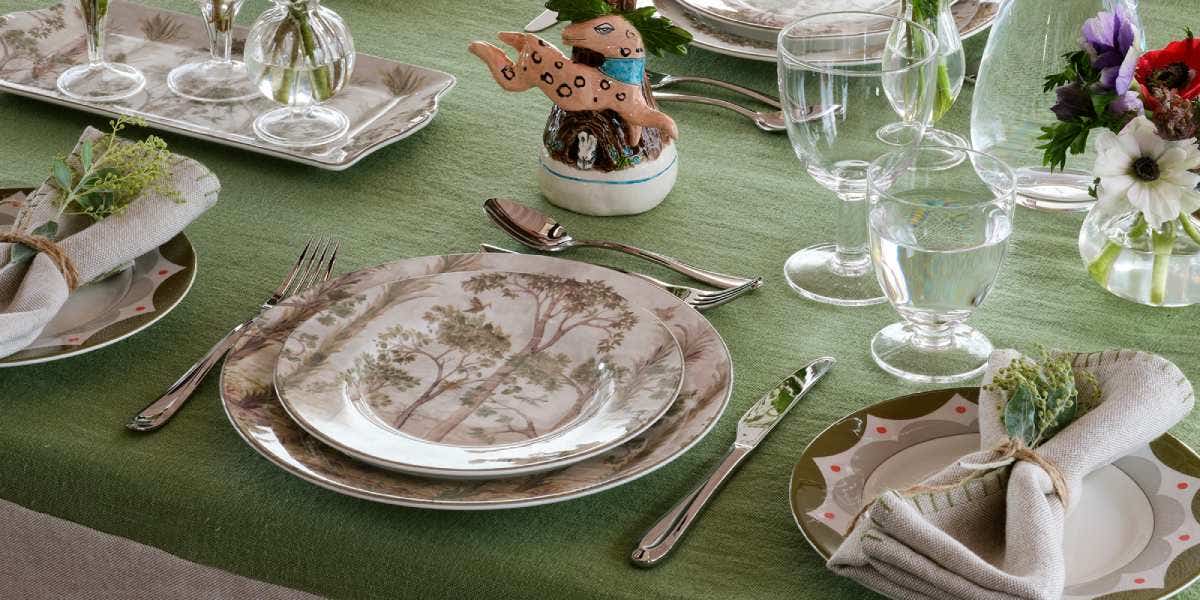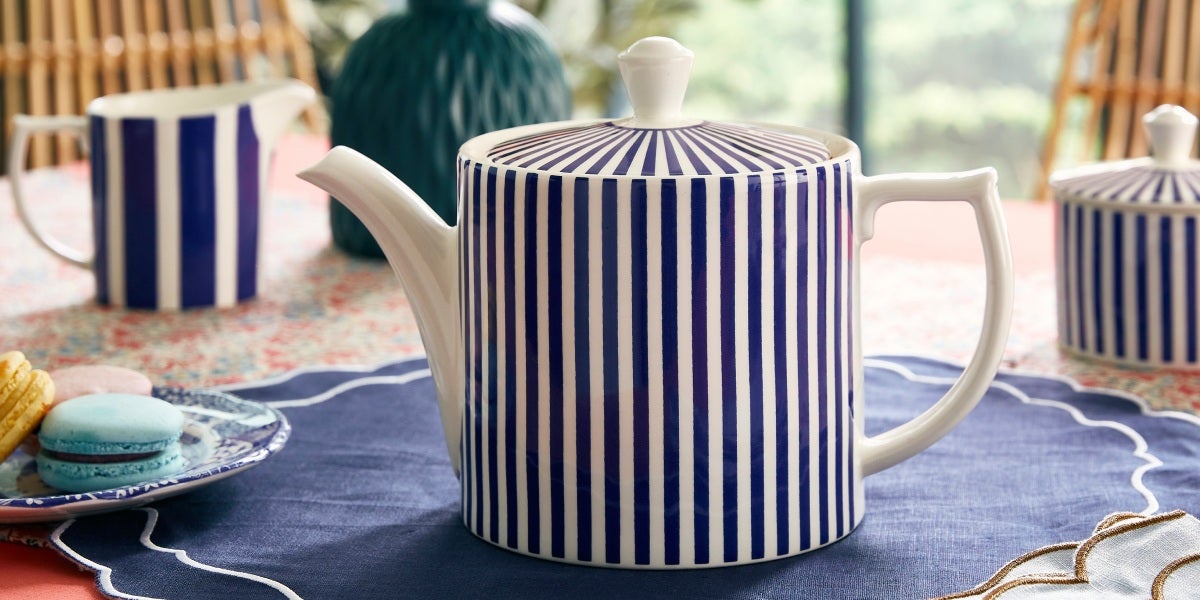
Spode’s earthenware factory sits in the heart of the Potteries, Stoke-on-Trent, the birthplace of our founder, master potter Josiah Spode I, and the city in which he chose to set up his pottery over 250 years ago.
The production methods to produce Spode ceramics have evolved in many ways throughout the years, but the processes still require the talents of highly skilled potters to produce the quality that is expected from Spode and its renowned collections. Read on to find out more about our processes and to look inside Spode’s factory today.
Plate Making
Spode earthenware plates, such as Blue Italian dinner plates, are made using the clay that’s formed into pug rolls in our clay department. For each plate, a disc of clay is cut from the pug roll and transferred face down onto a plaster of paris mould which gives the plate its shape. The clay disc is flattened to the shape of the mould while excess clay is trimmed from the edges. The trimmings are collected and recycled, and the clay plates are transferred to a dryer.


From the dryer, the plates are placed onto a sponging machine where they are buffed at the top and sides to smooth the edges. Once complete, the clay plates are stacked and left to dry before being biscuit fired – the first and highest temperature of firing in the kiln. After the first fire, the plates will be ready for decoration and glazing.
Glazing
Glazing a piece of Spode can happen before or after decoration is applied to the piece. Spode’s crystal-clear glaze coats each product to showcase the beauty of our white earthenware. It has a beautiful sparkle and shine.
For some of Spode’s ceramics, such as teapots, lids and bowls, the biscuit ware is hand-dipped in liquid glaze and any surplus is shaken off before being placed onto the dryer.


Flatware, such as dinner plates, side plates and tea plates, are spray glazed while sat on arms that turn the piece as it moves along the conveyor. Once sprayed, they continue to travel down the line through a dryer before being placed on ‘cranks’ ready for the next firing.


If decoration has been added before the piece has been glazed, the pattern won’t be seen under the glaze until it emerges from the kiln, when the glaze, having melted, imparts a brilliance and luminosity to the underglaze colours.
Decorating
As mentioned, some Spode pieces are decorated before they are glazed. This is achieved using a printing machine that was introduced to Spode in 1954. The design is transferred from an engraved plate to a silicone pad that applies it to the biscuit piece. The rich colour is first spread across an engraving and excess colour is taken away. The pad then presses onto the engraving and transfers the colour, and the design, onto the ware.

For shapely pieces, such as teapots, serving bowls and teacups, the decoration is applied by hand by our team of talented lithographers using transfers. The transfer is moistened with water and carefully applied to the already glazed piece with exacting precision. It is then stretched and massaged onto the ware to ensure it sits beautifully against the piece. The ware is then fired so the decoration sinks into the glaze, finishing the product and making it dishwasher safe.


Final quality selection
At every stage and by every person, Spode’s ceramics are checked for quality. The final quality check is undertaken by Spode’s Selectors. With a keen attention to detail, they study the piece to ensure it meets our quality standards. Not only do they look and feel the product for imperfections, but they use a tool to listen to the product to ensure it makes the right ‘ting’ sound as it’s tapped. An important and thorough step of the process to ensure that every piece of Spode will be adored and enjoyed for many years to come.

If you’ve enjoyed this peek into Spode’s factory, take a look at part one of our Inside the Factory series to explore how we form our clay, moulds and the all-important teacup handles.
